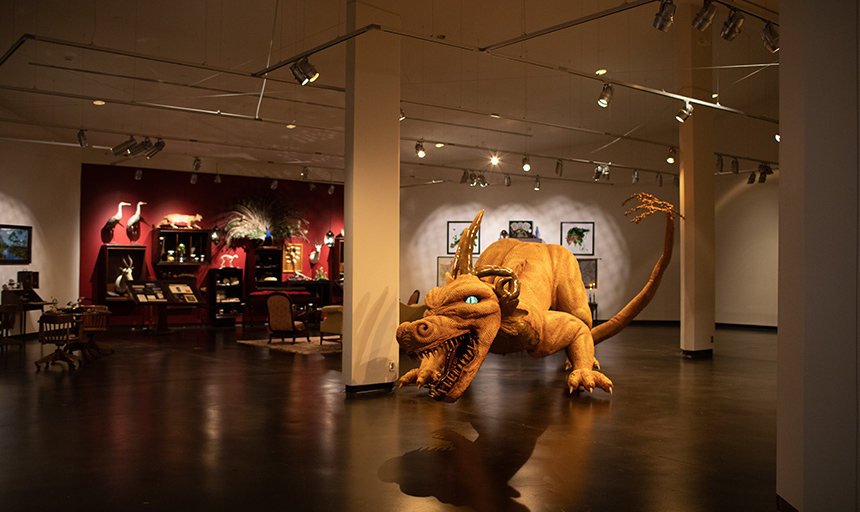Drs. Poli and Stoneman make connection between prehistoric 100-foot tall plant fossils and dragon folklore
February 28, 2020

What started as a Coffee Shop Talk on plants has evolved into a multidisciplinary research project and community-inclusive art exhibit about dragons and their mythic origins. The project was spearheaded by Dr. DorothyBelle Poli, professor of biology, and Dr. Lisa Stoneman, associate professor and chairperson of education. The two have, over the course of several years, combed through the literature about plant location, more specifically the prehistoric Lepidodendron plant, and tracked folkloric histories throughout the years. With the assistance of the scholars in the Dragon Research Collaborative, a group dedicated to a scientific approach to dragon lore, the professors cross-referenced geographically the myths and presence of the now-extinct Lepidodendron to conclude that the plant, whose spores would catch fire in the air and whose fossilized remains looked reptilian in design, led to the belief of the existence of dragons.
Though the plants and stories of dragons cropped up throughout the globe, the group decided to narrow their focus to the United Kingdom, as that was the region with the most heavily saturated amount of both story and plant. One particular bit of research that led Poli and Stoneman to Durham, England, was the legend of the Lambton Worm, a story of a serpentine-in-shape dragon that threatened the safety of the locale during the 14th century. The professors were excited to discover that fossilized Lepidodendron leaf remains provided confirmation of their supposition - that the patterns of the dragons described in the folklore correlated with scar patterns on the fossilized leaves.
Students from many majors and disciplines were drawn to this subject, whether due to their fascination with the plant species, history or literature. One student in the business program tracked shipping logs for trade routes in the United Kingdom between the years 600 C.E. and 1,500 C.E. for mention of dragon merchandise and markets. Finding thousands of results while combing through data, the student researcher learned that the market grew exponentially between the years 1,200 and 1,500 C.E.
It was important to all involved that the project was constantly evolved and reviewed by professionals in various arenas. For this reason, Poli and Stoneman contacted the Virginia Museum of Natural History to cultivate artifacts for the exhibit that they envisioned would convey their message and research. From art to festivals, fossilized historical artifacts, books and learning tools, the many academic disciplines collided to present an intensely interesting history and exhibit, “On the Origins of Dragons,” now open to the public until March 22nd at Roanoke College’s Olin Hall Galleries.
Through a focus on understanding how the first interpretations of an unknown object drove elaborate and diverse folklore as rationale for what early peoples were experiencing, Poli’s and Stoneman’s research explains what seemed, up until now, unexplainable.